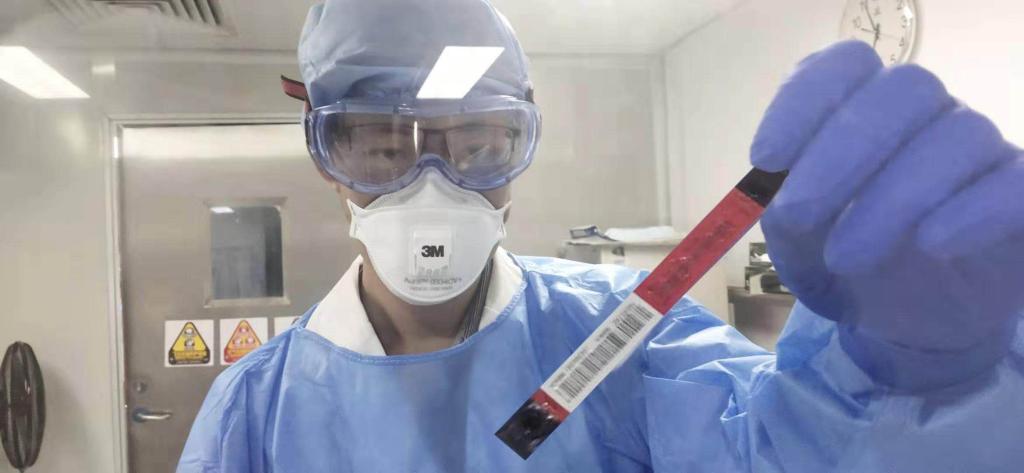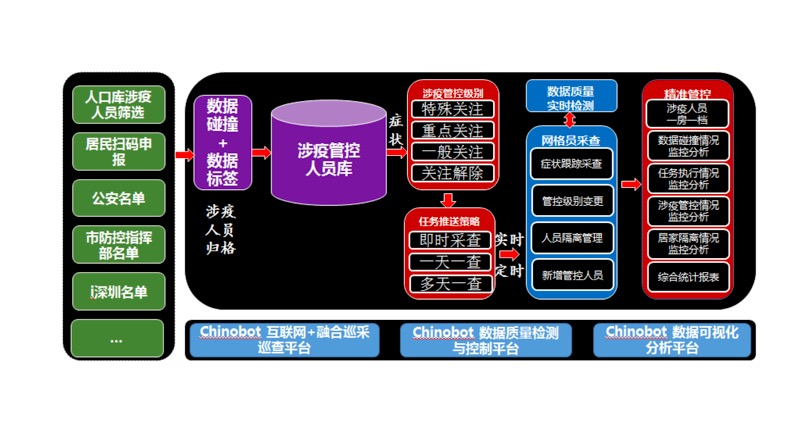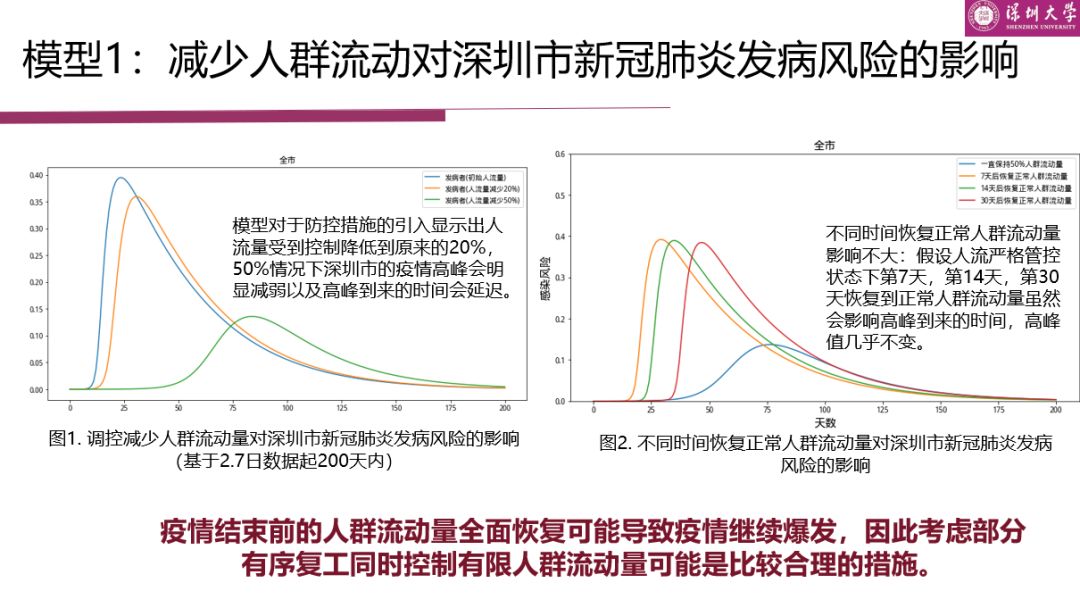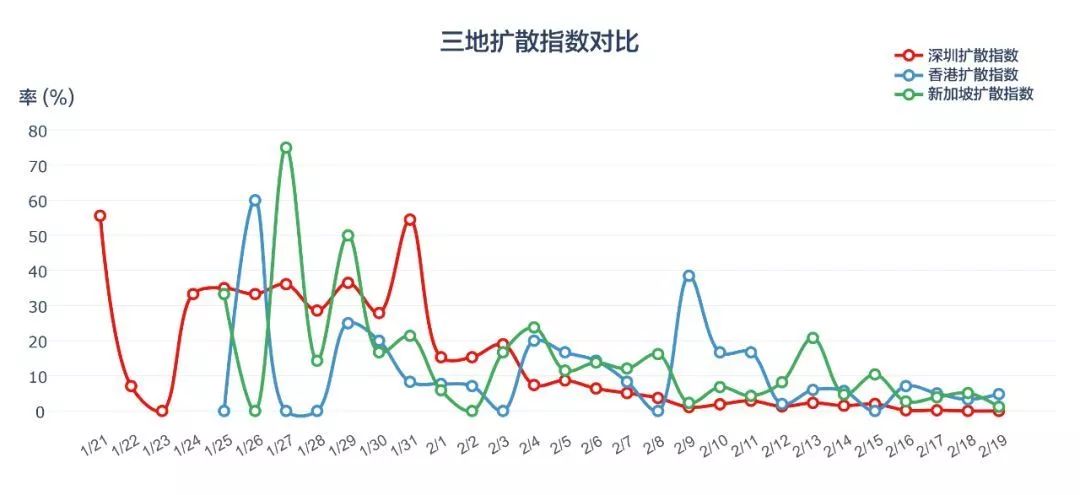Science and technology are indispensable for overcoming disease. To cope with the outbreak of the new viral disease, Covid-19, Shenzhen University (SZU) has set up an emergency scientific research team on the new coronavirus on January 30, to make full use of the advantages of multidisciplinary integration of medicine, chemistry, urban spatial informatics, computer science, mathematics and communication. The team seeks to inject technological power into epidemic prevention and control, in terms of research and development of virus diagnosis kits, auxiliary medical devices, big data epidemic information and artificial intelligence to create a prevention and control platform.
A series of scientific research projects of SZU have drawn the attention of a number of media sources, including Xinhua, People’s Daily Online, Guangming Online, China Media Group, China News Service and China Education Newspaper, as well as Caixin Online, The Paper, Nanfang Daily, Southern Metropolis Daily and Shenzhen Special Zone Daily. Some of the achievements have been published on the official website of the Ministry of Education and the "xuexi.cn" platform.
SZU develops the world's first single-agent chemiluminescence COVID-19 antibody detection kit
On the evening of February 10th, single agent chemiluminescence covid-29 antibody detection kit was jointly developed by Shenzhen University, Shenzhen Third People's Hospital (National Infectious Diseases Clinical Research Center) and The Trueturn-Biological Technology Co. Ltd and it has been successfully tested in the Third People's Hospital of Shenzhen. Different from (viral) nucleic acid testing, this kit can rapidly diagnose the COVID-19 infection in 22 minutes by detecting novel coronavirus-specific IgM / IgG antibodies in the blood of infected persons.

At present, the samples collected for nucleic acid testing of suspected cases of novel coronavirus are mostly upper respiratory tract samples (mainly throat swabs), and it is extremely risky for medical personnel to be exposed to the virus during the collection process. The reason for using serum or plasma as test samples in the chemiluminescence COVID-19 IgM and IgG antibody detection kit developed this time, is that blood samples are easily collected and generally, blood samples have hardly a trace of the virus, which can greatly reduce the risk of infection for medical staff. At the same time, the test results can be obtained in 22 minutes, which can also save the complicated procedures of testing the samples in the laboratory. In other words, the use of the detection kit is simple, it can protect the safety of medical staff and it greatly relieves the huge work pressure of staff carrying out clinical diagnosis and treatment.
Chen Xinchun, deputy director of Shenzhen University Medical Department, emphasized that the test kit developed this time is to detect antibodies produced by the patients ' immune system in response to the virus, not to test the virus itself (such as viral nucleic acid). At least 90 patients have been tested positive for the novel coronavirus pneumonia in the Third People's Hospital of Shenzhen (National Center for Clinical Research of Infectious Diseases). Preliminary clinical trial results after the use of the newly developed test kit show that in the 90 clinical samples (including 21 cases that tested negative), the IgM compliance rate was 95.5% (86/90), and the IgG clinical compliance rate was 96.7% (87/90). Researchers will set out to collect more clinical samples for large-scale validation.
SZU invents “invisible gloves” for Wuhan: A repair protective gear that can be washed away
Frontline medical workers from hospitals in Wuhan and those sent from other cities are overloaded with work and under great pressure because the COVID-19 has raged in Wuhan since the Spring Festival. Many of them suffer from dermatitis on their faces and hands caused by wearing protective equipment and using disinfectant for a long time. After hearing about it, Dr.Wu Yiguang from SZU’s College of Chemistry and Environment brought heart-warming protection to medical workers by donating new products for protecting and repairing injuries to the hospitals in Hubei province, which were invented by his team.

Bringing their professional knowledge into full play, Wu’s team contacted Wuhan Union Hospital, Zhongnan Hospital of Wuhan University, Wuhan Red Cross Hospital and Tianyou Hospital as soon as they heard about the condition of medical workers, and donated 1800 tubes of Anpushu (安普舒) Wound-care Ointments, 1440 bottles Anpushu Dressing Sprays, with a market value of around 520 thousand yuan. The second batch of donated products is worth around 180 thousand yuan, including 600 tubes of Anpushu Wound-care Ointments and 540 bottles of Anpushu Dressing Sprays, which will be sent to Hankou Hospital in Wuhan and the People’s Hospital, the Second People’s Hospital, the Third People’s Hospital, the Fifth People’s Hospital in Jingzhou.
These two batches of donated goods contain high-tech medical devices for wound healing, invented by Shenzhen University, and produced by Jiangxi Guangzhi Jinhui Medical Products CO LTD. Novel marine biomaterials and bionic technology were used to produce these devices, which help ideal wound repair by balanced treatment, promoting natural healing and long term prevention of viral infections.
So far the first batch of donated products of Wu’s team from SZU has been sent to Wuhan Union Hospital, Zhongnan Hospital of Wuhan University, Wuhan Red Cross Hospital and Tianyou Hospital. Preparations for the second batch of donated goods are well under way.
Using algorithms in epidemic control: the usefulness of big data and AI
Artificial intelligence and big data technologies are increasingly used to help contain the novel coronavirus outbreak in China, playing significant roles in this battle. SZU is carrying out research on the containment and response to Covid-19, to enable authorities to track personnel flow, analyze the risks of work resumption and predict the development of the epidemic.

On February 12, SZU released the “Spatial-temporal Analysis Report on the Prevention and Control of the Coronavirus”, which simulated the spread of the epidemic throughout the city using big data. The report was completed jointly by the Visual Computing Research Center of SZU, the Urban Spatial Information Engineering Department of SZU and the School of Public Health of the Medical Science Department of SZU. Two days later, the same team issued “Visual Analysis of the Covid-19 Outbreak in Shenzhen”. This report analyzed in particular the epidemic conditions before work could be fully resumed, providing data and interpretation of the epidemic situation within the Shenzhen area. On February 21, the team published a "Visual Analysis Report of the Epidemic Situation in Shenzhen, Hong Kong and Singapore" to compare the different measures and control effects taken by the three cities.
On February 25, the epidemic research group of the School of Mathematics and Statistics of SZU released a report on “Epidemic Modeling and Analysis of New Coronavirus Covid-19", a quantitative analysis of both epidemic prevention and control impact and the trend of its development from a mathematical and statistical perspective.

On January 29, the laboratory of Artificial Intelligence and Digital Economy of Guangdong Province (Shenzhen), run by SZU, issued the “Visualized Analysis Report ofNew Coronavirus Outbreak in Shenzhen” in conjunction with the Information Center of Baoan District Government Service Data Administration andShenZhen Chinobot Technology Co., Ltd.This research team configured the “NCP Epidemic Prevention and Control System”, which was put into trial operation on February 1 in Hangcheng Street, Baoan District.

In the battle of scientific prowess against the epidemic, the achievements of the liberal arts majors of SZU are worth mentioning as well. On February 18, in association with the School of Communication of SZU and the Shenzhen Center for Disease Control and Prevention, SZU released “The Survey Report on New Coronavirus of Shenzhen citizens”, which reflects the awareness, attitudes and preventive measures of Shenzhen citizens to the virus.

Overview of Key Research Achievements of SZU on Covid-19
On January 29, the laboratory of Artificial Intelligence and Digital Economy of Guangdong Province (Shenzhen) of SZU, jointly issued the “Visualized Analysis Report of New Coronavirus Outbreak in Shenzhen”, together with theInformation Center of Baoan Government Service Data Administration andShenZhen Chinobot Technology Co., Ltd.
On February 1, the "NCP Epidemic Prevention and Control System" developed by the laboratory of Artificial Intelligence and Digital Economy of Guangdong Province (Shenzhen) of SZU, jointly with the Information Center of Baoan Government Service Data Administration and ShenZhen Chinobot Technology Co., Ltd, was put into trial operation in Hangcheng Street, Baoan District.
On February 10, Shenzhen University, the Third People’s Hospital of Shenzhen and Shenzhen Tisenc Medical Devices Co., Ltd. jointly developed the world's first single chemiluminescence new coronavirus antibody detection kit.
On February 12, Dr. Wu Yiguang from the School of Chemical and Environmental Engineering of SZU donated "invisible gloves", a new wound repair and protection product invented by his research team, to Wuhan for epidemic prevention.
5. On February 12, The Visual Computing Research Center of SZU, the Urban Spatial Information Engineering Department of SZU and the School of Public Health of the Medical Science Department of SZU jointly completed a “Spatial-temporal Analysis Report on the Prevention and Control of the Coronavirus”.
6. On February 14, The Department of Urban Spatial Information Engineering of SZU and the Visual Computing Research Center of the School of Computer and Software jointly completed a “Visual Analysis of the Covid-19 Outbreak in Shenzhen”.
7. On February 18, the School of Communication of SZU and the Shenzhen Centre for Disease Prevention and Control jointly released a “Report on a Survey of Covid-19 among Shenzhen Citizens”.
8. On February 21, The Department of Urban Spatial Information Engineering of SZU and the Visual Computing Research Center of the School of Computer and Software jointly published the "Visual Analysis Report of the Epidemic Situation in Shenzhen, Hong Kong and Singapore".
9. On February 25, the epidemic research team from the School of Mathematics and Statistics of SZU released “The Report of Epidemic Modeling and Analysis of Covid-19”.

